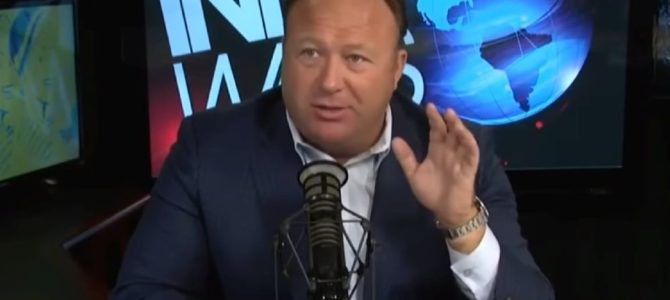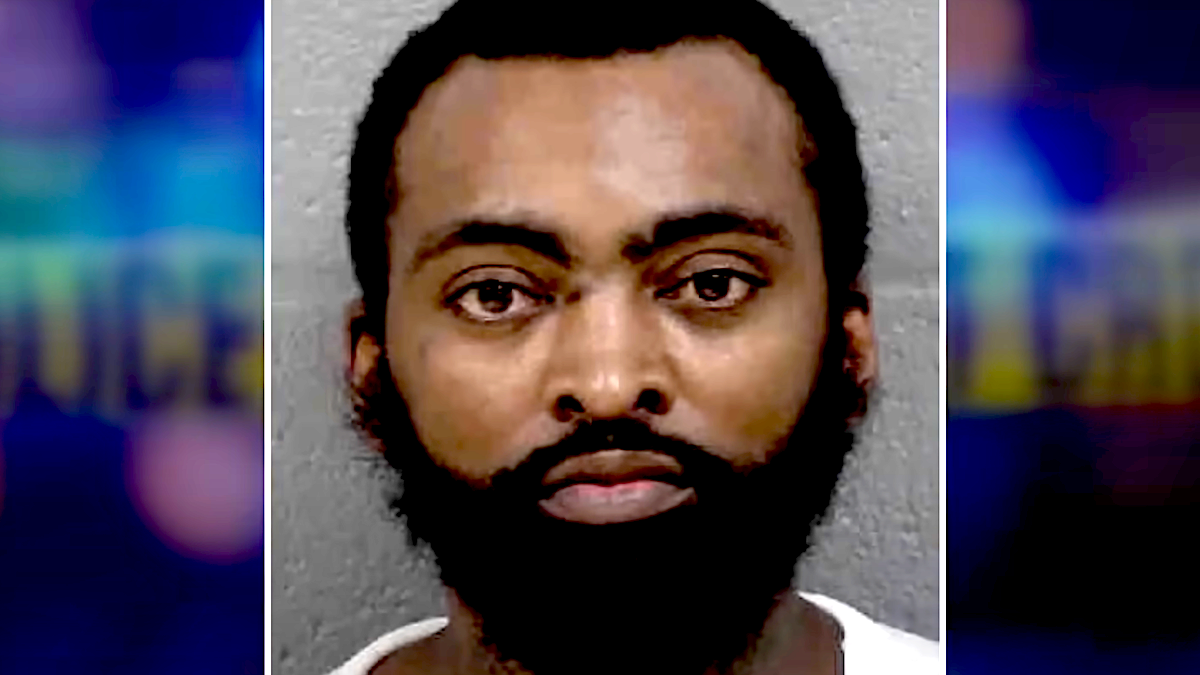
In a weekend essay for The New York Times, conservative commentator Charlie Sykes argues that the Right can no longer disregard marginal figures like the conspiracy-mongering Alex Jones. “We can’t keep ignoring the fringe,” writes Sykes. “We have to expose it.”
It’s an odd piece from the usually insightful Sykes, considering the Left’s manifest failure to confront its own fringe, a member of which tried to assassinate Republican members of Congress just days before Sykes’ article ran. Given all that’s happened in recent weeks, and the long history of left-wing political violence in America, is the Right’s failure to confront Jones really a more pressing problem than the Left’s refusal to renounce their own radicals?
Jones, a bona fide conspiracy theorist, is certainly a loathsome character. His show, InfoWars, broadcasts his crackpot ideas on more than 100 radio stations every weekday and streams to two million subscribers on YouTube: 9/11 was an inside job, the 2012 Sandy Hook massacre was a hoax. That sort of thing. His popularity is an indictment of our political discourse, but he’s by no means mainstream—not even after making mainstream headlines last week when NBC announced Megyn Kelly would air an interview with him.
Don’t Pretend Ignorance of What Drives Left-Wing Violence
The interview, which relatively few people watched, understandably met with outrage from families of Sandy Hook victims who objected to someone like Jones being given a platform. Sykes argues that, difficult though it may be, we need to talk about the Joneses among us and reveal them for the charlatans they are.
But then Sykes, reflecting on how it’s often easier just to ignore what people say and do on the margins, writes this:
We can’t know exactly what drove a man to open fire last week at a field where Republican members of Congress were prepping for a charity baseball game, but in the aftermath of that shocking event, we can trace the shooter’s online presence to the fringe world on the left he inhabited where he railed that ‘It’s Time to Destroy Trump & Co.’
While Alex Jones has no exact analogue on the left, we have to watch him, and also watch out to make sure that something similar is not emerging on the left.
The thing is, we do know what drove James T. Hodgkinson to open fire on GOP lawmakers last week. He had plans. He had names. He had thought it through and made a decision. What drove him to that decision was a leftist ideology that justifies violence in the name of political progress. Hodgkinson, who volunteered for the Bernie Sanders presidential campaign, left behind social media feeds that are virtually indistinguishable from those of countless progressive Democratic activists.
Sykes claims there is no analogue to Jones on the Left. Although there might not be a single figure on the Left with as large a following as Jones, there are so many left-wing analogues to him that a list would be endless. The entire American Left is a kind of mirror image of InfoWars, rife with Jones-like conspiracy theories, now more than ever. The persistent belief among left-leaning members of the press that Trump stole the presidential election by colluding with Russia, despite no evidence after months of investigations, is commonplace. Much of the mainstream coverage of the Russia probe is premised on that belief. So too is the deeply held belief that Trump is a racist and a bigot intent on stripping Americans and immigrants of their rights.
With Trump in the White House, the Left now applies this muddled thinking to the entire Republican party. After the Alexandria shooting, Markos Moulitsas, founder of Daily Kos and a generally accepted member of the mainstream media establishment, tweeted: “Republicans are getting what they want.” Scott Pelly, who last week ended his six-year stint as anchor of “CBS Evening News,” questioned whether the attempted assassination of Republican members of Congress was “foreseeable, predictable and, to some degree, self-inflicted.” The editors of The New York Times took the occasion to dredge up the thoroughly discredited talking point that the 2011 shooting of Rep. Gabby Giffords was politically motivated, the shooter having been influenced by the supposedly violent rhetoric of Sarah Palin’s map of congressional districts that Republicans should “target.”
The Mainstream Left Has Never Shunned The Radical Left
Other examples abound. Amid all this, there has been a conspicuous lack of soul-searching on the Left. Yet Sykes seems more troubled by the Right’s failure to confront crackpots from the fringe, writing that he’s “haunted by this question: Had we done more to expose the viciously dishonest hoaxes, might things have turned out differently?”
At one time, the responsible gatekeepers of the conservative movement would have excommunicated Mr. Jones. Back in the 1960s, William F. Buckley Jr. famously used his immense authority to cast out the John Birch Society. Had something similar happened, and Mr. Jones had been exposed as the lunatic charlatan he is, perhaps not even Donald Trump would have deigned to be associated with him.
The problem is that there are no figures today with the kind of authority William F. Buckley had with conservatives in the 1960s. The proliferation of mass media and social media in the Internet age has destroyed the very idea of authority in our public discourse, on both the Left and the Right. Jones can no more be excommunicated from the Right by, say, the editors of National Review than media fame-bot Milo Yiannopoulos or millennial Nazi Richard Spencer. All of them have their own online followings that answer to no authority.
The same goes for the progressive left. But the difference is, the fringe left isn’t shunned by mainstream progressives. The Antifa rioters on college campuses are no more a source of embarrassment to respectable liberals than is Oskar Eustis, director of the now-closed production of “Julius Caesar” that featured an actor styled as President Trump in the role of Caesar, who in the story is of course assassinated.
This shouldn’t come as a surprise. Those familiar with the relevant history know that the Left has never shunned its radicals. To cite just one example, Kathy Boudin is a convicted murderer and one-time member of the Weather Underground, a violent left-wing terrorist group active in the 1970s. Today, she has a prestigious teaching gig at Columbia University. Boudin was the getaway driver in the infamous 1981 Brinks armored car robbery, in which her fellow terrorists killed three police officers. Her official Columbia biography doesn’t mention her crimes, emphasizing instead her work “on the causes and consequences of mass incarceration,” among other things.
There are many others on the Left like Boudin, including her erstwhile Weather Underground comrades William Ayers and Bernardine Dohrn, who adopted Boudin’s son when she went to prison and raised him as their own. Later in life, in some cases after a stint in prison, many of these left-wing radicals have found gainful employment as college professors. They were never shunned, they were never exposed. They are today accepted members of the progressive Democratic Party, just as today’s Antifa rioters will no doubt someday be the subjects of fawning dissertations and academic papers on social justice and political “resistance.”
The only reason to pretend that the right-wing fringe represents anything close to the size, scope, and historical legacy of left-wing political extremism in America is to avoid talking about the real problem. And that problem is getting worse. It’s not that the Right doesn’t have its own ugly corners, but if we want to bring down the temperature of our political rhetoric, the Left has a lot more housecleaning to do than the Right does. To argue otherwise is an exercise in willful blindness. Although it is a good way to get published in The New York Times.









